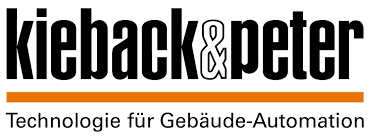
Invoices can now be located at the touch of a button
The Eiffel tower and the Reichstag building in Berlin are just two of the many structures that building automation specialist Kieback&Peter GmbH & Co. KG has outfitted. The headquarters of the international group is located in Berlin, where invoice management is centrally managed today. Incoming and outgoing invoices are controlled via an enterprise content management (ECM) system.
Avoiding cash discount losses
For the basis of the solution, Kieback&Peter decided to introduce an ECM system that can work to the German principles of digital archiving (GoBD), which have been in force since 2015. “Due to the objective of automating the invoicing process, one of the most important requirements for the ECM system was to demonstrate effective document workflow control,” stresses Seidel. In addition to this, the ECM system needed to allow for a connection to the existing software infrastructure, including production planning and controlling software, while also offering search functions and sufficient flexibility for further projects.
Prior to the ECM-based invoice solution, staff from Kieback&Peter used to send invoices they had approved to the central accounting department in Berlin for further processing. The employees are spread across the HQ, two factories and 31 branches. “We were keen to implement automated invoice capture as a way of preventing invoices from being left untouched for too long and resulting in cash discount losses,” reports Dirk Seidel, Project Manager at Kieback&Peter. Further objectives to be achieved in compliance with the signatory rules were a reduction in invoice processing times and dissolution of the archive with paper-based invoices.
Capturing paper-based and email-based invoices
Konica Minolta supported Kieback&Peter in both planning and implementing the project, whose primary focus was initially on capturing incoming invoices digitally with automated subsequent processing. To digitise the invoices arriving in paper form, Kieback&Peter set up a scan workplace in its central mailroom.
The fact that the implemented solution automatically detects important invoice data such as the invoice number and invoice total, extracts it and then connects it with the master data was of key importance here. Just like with the scanned invoices, this must also work for invoices received via email. Complete master data that comes from the connected accounting software is the basic prerequisite for the correct capture of invoice data. “The initial challenge primarily revolved around getting the master data to the requisite state and establishing the importance of this work in the minds of the employees,” explains Seidel. “After all, the solution required additional work in terms of both scanning and preparing the data.”
But when the benefits of digitised invoices became apparent, any initial worries about the extra work were soon forgotten. While employees previously had to physically search for invoices already entered into the invoice archive, the same searches can today be performed at the touch of a button. All they need to do is enter the respective invoice number on their PC and the desired invoice is then displayed on screen. The invoice workflow also ensures that further processing of the invoices is performed automatically. As per the original signatory rules, the employees responsible for the invoice and their superiors receive the invoices electronically for approval by mouse click, meaning that payment and booking can be performed automatically.
It was therefore possible to achieve all objectives – dissolution of the paper invoice archive, acceleration of invoice processing times and avoidance of both cash discount losses and invoices that get “left behind“. Greater transparency and evaluation options represent further advantages. Among other things, it is now possible to analyse how many incoming invoices are in circulation, from whom they originate and their sum totals.
The ECM system offers a great deal of potential for further projects
Contrary to the original plan to only automate incoming invoices, the impressive benefit achieved and the successful project flow quickly motivated Kieback&Peter to also implement an outgoing invoice workflow together with Konica Minolta. Invoices that employees used to print out, fold, insert in envelopes and then frank themselves ready for collection by the postal service are today sent to a mailhandling service provider via the ECM system. “As we no longer have to do all the work by hand, we were able to handle the same workload with one fewer employee, who was not laid off but rather offered a position in a better qualified section within Purchasing.”
It has now been clear for quite some time that the investment in the ECM system and the extra work associated with this has more than paid off, as it not only represents the basis for the invoicing project, but rather opens the door for further beneficial projects. Projects that have been planned and are already in the implementation phase in some cases include an electronic purchase order file and the visualisation of technical documentation in the digital environment.

Dirk Seidel
Project Management, Kieback&Peter GmbH & Co. KG
"The basic work performed today for invoice automation will deliver even greater advantages, as it opens the door for further beneficial projects."
